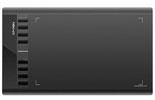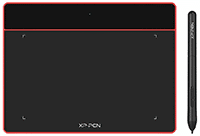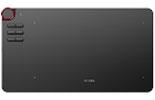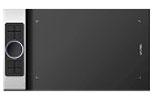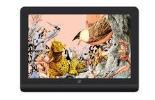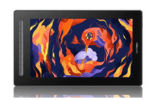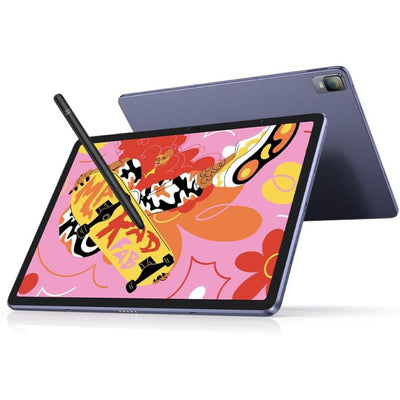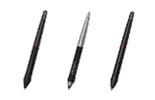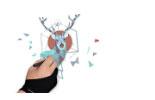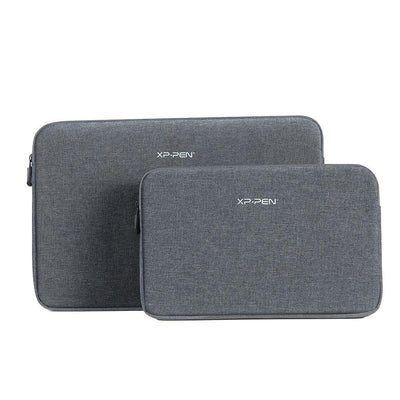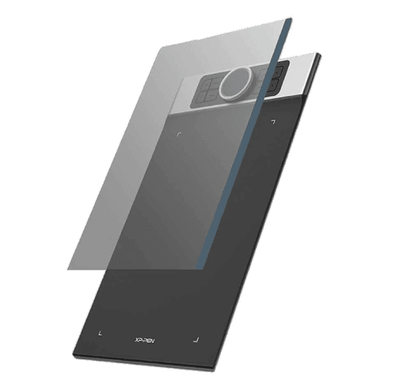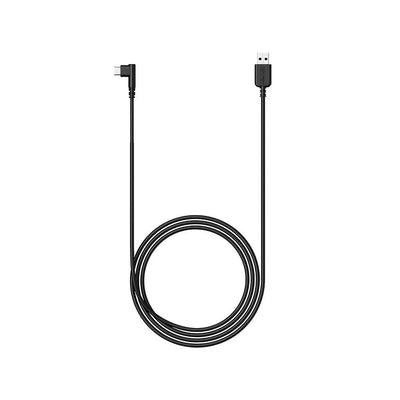Role of Graphic Tablets in a Designer's Toolkit : Essential or Optional?

Designers today have a wide range of tools at their disposal to bring their creative visions to life. One such tool that has gained significant popularity in recent years is the tablet.
Graphic Tablets are portable devices that offer designers a unique and versatile way to sketch, draw, and create digital artwork.
However, the question remains: Are graphic Tablets essential or optional in a designer's toolkit?
In this article, we will explore the functionality, benefits, drawbacks, and debate surrounding the use of Graphic Tablets in design.
Understanding the Functionality of Graphic Tablets in Design

Before diving into the debate, let's first understand the basics of using a tablet in design.
Graphic Tablets, equipped with a stylus or pen, allow designers to directly interact with the screen, providing a natural drawing experience.
This functionality opens up a world of possibilities, enabling designers to sketch out ideas, create illustrations, and refine their work with precision.
When it comes to using Graphic Tablets in design, there are a few key factors to consider. The first is the ability to replicate the tactile experience of traditional drawing tools.
Designers can use the pressure sensitivity of the stylus to control the thickness and intensity of their strokes, mimicking the feel of a pen or brush on paper. This level of control allows for fine-tuning and attention to detail that may be difficult to achieve with other tools.
Furthermore, Graphic Tablets offer a range of advanced features that enhance the design process. Many Graphic Tablets come with customizable shortcut buttons, allowing designers to access frequently used tools or functions with a single touch.
This streamlines the workflow and saves valuable time. Additionally, some Graphic Tablets have built-in touchscreens that provide the freedom to zoom, rotate, and manipulate the design canvas effortlessly. This intuitive interaction with the screen adds another layer of convenience and flexibility to the design process.
Another advantage of using Graphic Tablets in design is the ability to work on the go. Graphic Tablets are portable and lightweight, making them ideal for designers who are constantly on the move.
Whether it's sketching ideas during a commute or making quick edits during a client meeting, Graphic Tablets offer the flexibility to work from anywhere, without compromising on functionality or quality.
Moreover, Graphic Tablets often come with software specifically designed for digital art and design. These programs provide a wide range of tools and features that cater to the needs of designers.
From advanced brush settings to layer management, these software packages offer a comprehensive suite of tools that empower designers to bring their visions to life.
Lastly, Graphic Tablets can also serve as a valuable tool for collaboration. With the ability to share files and work in real-time, designers can easily collaborate with clients, colleagues, or other artists.
This seamless integration of technology fosters a collaborative environment, allowing for efficient feedback and iteration.
In conclusion, Graphic Tablets have revolutionized the design industry by providing a natural and intuitive way for designers to create and refine their work.
With their ability to replicate the tactile experience of traditional drawing tools, advanced features, portability, and collaboration capabilities, Graphic Tablets have become an essential tool for designers of all levels.
Whether it's sketching out initial ideas or putting the finishing touches on a masterpiece, Graphic Tablets offer a versatile and powerful platform for design.
Comparing Graphic Tablets and Traditional Design Tools

While Graphic Tablets offer numerous advantages, it is essential to consider how they stack up against traditional design tools.
Let's explore two common comparisons: Graphic Tablets vs. hand sketching and Graphic Tablets vs. computer software.
Graphic Tablets vs. Hand Sketching
Hand sketching has long been a fundamental part of the design process. The immediacy and tactile nature of pen and paper can be inspiring and help bring ideas to life.
The feeling of a pen gliding across the paper, the sound of the pencil scratching, and the ability to quickly sketch out ideas are all unique experiences that Graphic Tablets cannot fully replicate.
However, Graphic Tablets offer the convenience of digitizing hand-drawn sketches instantly, making them easily shareable and editable.
This digital workflow streamlines collaboration and iteration, ultimately saving time and effort.
With Graphic Tablets, designers can effortlessly transfer their hand-drawn sketches into a digital format, allowing for easy manipulation, resizing, and editing. This flexibility opens up new possibilities for experimentation and refinement.
Furthermore, Graphic Tablets provide a range of digital tools that can enhance hand sketching. For example, they offer a variety of virtual brushes and pens that mimic the feel and texture of traditional art supplies.
This allows designers to achieve a similar level of expressiveness and creativity as they would with physical tools. Graphic Tablets also provide features like layers and undo/redo options, which can be incredibly useful for refining sketches and exploring different design directions.
Graphic Tablets vs. Computer Software
Design software has revolutionized the industry, offering powerful tools and capabilities to designers. Graphic Tablets can complement these software applications, providing a more intuitive and natural input method.
Digital brushes and stylus pens allow for greater control and precision, enhancing the design experience. The ability to directly interact with the screen using a stylus can make the design process more fluid and responsive.
Additionally, Graphic Tablets with pressure-sensitive screens can simulate realistic textures and brush strokes, adding depth to the final artwork. Designers can adjust the pressure applied to the stylus, resulting in thicker or thinner lines, just like with traditional art tools. This level of control allows for more nuanced and detailed designs.
Moreover, Graphic Tablets offer portability and flexibility that traditional design tools cannot match.
Designers can work on their projects anywhere, whether it's on a train, in a coffee shop, or during a meeting. This mobility enables designers to capture inspiration in the moment and work on their designs whenever and wherever creativity strikes.
Furthermore, Graphic Tablets often come with built-in features that can enhance the design process. For example, some Graphic Tablets have integrated cameras, allowing designers to capture reference images or take photos of their surroundings for inspiration.
Others have gesture controls or touch-sensitive screens that provide additional ways to interact with the design software.
In conclusion, while Graphic Tablets may not fully replace traditional design tools, they offer a range of advantages that can greatly enhance the design process.
From digitizing hand-drawn sketches to providing a more intuitive input method and offering portability, Graphic Tablets have become valuable tools for designers in today's digital age.
Evaluating the Benefits of Graphic Tablets in Design

Beyond their functionality and comparisons to traditional tools, Graphic Tablets bring several benefits to the design process.
Let's explore two key advantages: speed and efficiency, and versatility and portability.
Speed and Efficiency in Design Process
Graphic Tablets offer designers a faster and more efficient workflow. With the ability to sketch and iterate digitally, designers can rapidly explore ideas and make changes on the fly.
Digital sketches can be easily duplicated, resized, and rearranged, all without the need for erasers, tracing paper, or scanning. This streamlined process saves valuable time and allows designers to focus on the creative aspects of their work.
Versatility and Portability of Graphic Tablets
Another significant advantage of Graphic Tablets is their versatility and portability. Designers can take their Graphic Tablets anywhere, eliminating the need for bulky sketchbooks or computer setups.
Whether in a coffee shop or a client meeting, Graphic Tablets provide a mobile digital canvas that is always accessible. This flexibility allows designers to capture inspiration in the moment and work on projects wherever and whenever creativity strikes.
Addressing the Drawbacks of Graphic Tablet’s Use
While Graphic Tablets offer numerous benefits, it is important to acknowledge and address their drawbacks.
Two common concerns surrounding tablet use are the learning curve and adaptability issues, as well as the cost implications.
Learning Curve and Adaptability Issues
For designers accustomed to traditional tools or computer software, transitioning to a tablet may require some adjustment and practice.
The shift from a physical canvas to a digital screen can take time to master. Additionally, adapting to the unique features and settings of specific Graphic Tablets and stylus pens may present a learning curve.
However, with perseverance and dedication, designers can overcome these challenges and fully embrace the potential of Graphic Tablets in their creative process.
Cost Implications of Graphic Tablets
Graphic Tablets come in a variety of models and price ranges, from entry-level options to high-end professional devices.
The cost of acquiring a tablet, along with any necessary software or accessories, can be a significant investment for designers, particularly those starting their careers.
However, it is important to consider the long-term benefits and potential return on investment that Graphic Tablets can provide. As Graphic Tablets continue to evolve and become more accessible, their cost-effectiveness is likely to improve.
The Debate: Are Graphic Tablets Essential or Optional?
With an understanding of Graphic Tablets' functionality, benefits, and drawbacks, let's delve into the ongoing debate: are Graphic Tablets essential or optional tools for designers?
Arguments for Graphic Tablets as Essential Tools
Proponents of Graphic Tablets argue that they have become an essential part of the modern designer's toolkit.
The ability to combine traditional drawing techniques with the advantages of digital technology offers designers unparalleled creative opportunities. Graphic Tablets enhance productivity, collaboration, and the overall quality of work produced.
They enable designers to experiment, refine, and iterate efficiently, ultimately pushing the boundaries of their creative potential.
Arguments for Graphic Tablets as Optional Tools
On the other hand, those who view Graphic Tablets as optional tools believe that traditional methods and computer software can adequately fulfill design requirements.
They argue that Graphic Tablets may be unnecessary for designers who are comfortable with established workflows and have no pressing need for the additional features that Graphic Tablets offer.
Furthermore, Graphic Tablets may not be affordable or accessible to all designers, making them a luxury rather than a necessity.
Ultimately, the decision of whether Graphic Tablets are essential or optional in a designer's toolkit depends on the individual's workflow, preferences, and creative goals.
While Graphic Tablets undoubtedly bring numerous benefits and enhance the design process, they are not a one-size-fits-all solution.
Designers must evaluate their specific needs, consider their budget, and decide whether the features and advantages of Graphic Tablets align with their artistic vision.
In conclusion, Graphic Tablets have become valuable tools in a designer's arsenal, offering functionality, benefits, and opportunities for creativity.
Whether essential or optional, Graphic Tablets provide a unique and versatile approach to design. As technology continues to advance and Graphic Tablets evolve, integrating them into the design process has the potential to unlock new possibilities and elevate the art of design.

